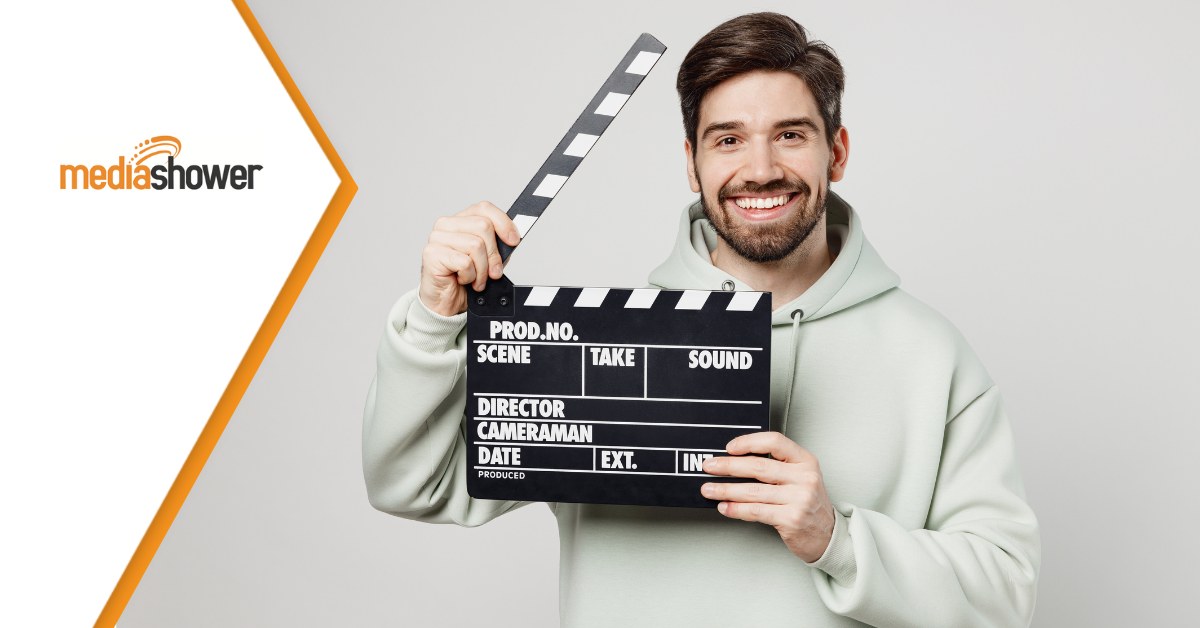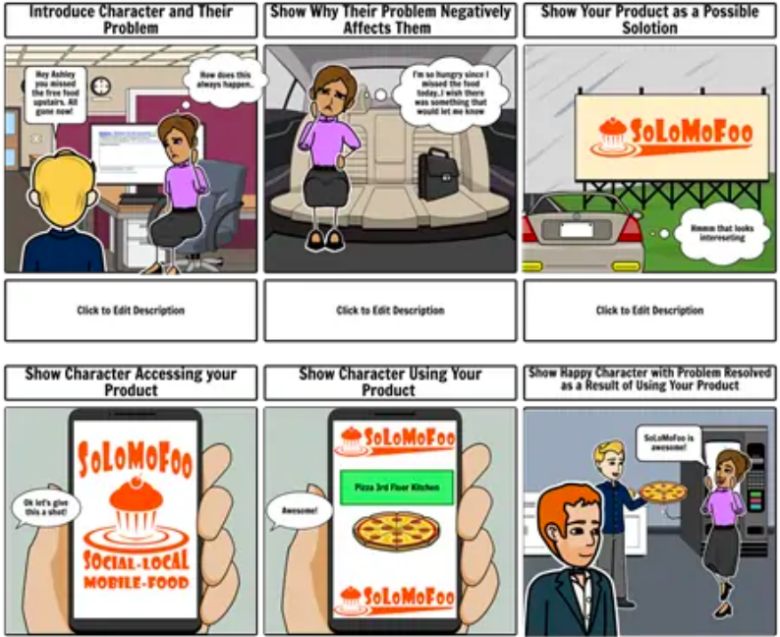
From YouTube to TikTok, more B2B marketing managers are investing in video. And great video starts with a great script.
In our new guide, we’re sharing our scriptwriting and storyboarding best practices, the first stage of creating effective video. We’ll share tools, video examples, and script templates to help you get started.
You’ll learn how to align your messaging with your audience, craft compelling calls to action, and make videos that get viewed.
Quick Facts:
- 90% of video marketers report a good return on investment from their B2B video. (Wyzowl)
- 51% of video marketing decision-makers use YouTube videos for product research before purchasing. (Hootsuite)
- In 2023, B2B video content saw an average engagement rate of 1,200% greater than the combined engagement rate of text- and image-based content. (Vidico)
Great B2B Video Examples
Consider the scriptwriting and storyboarding behind these two examples of B2B video storytelling.
Microsoft: Teams
Microsoft created this 56-second video to promote its collaboration platform Teams. From start to finish, the video tells a story through imagery, audio, and text.
The script had to describe that the video begins quietly, with only the sound of keystrokes on a keyboard and the stark visual of a blinking cursor on a word processor. This gives the viewer a sense of isolation.
As the video continues, music begins, and colors and more text appear, evoking a feeling of camaraderie that replaces the audience’s previous sense of remoteness.
The video then leads the viewer through a bite-size, easy-to-understand “evolution” of work-collaboration tools, using fast-paced, colorful 3D animation to show what Teams can do.
Typically, the script explains the video in words, from which designers or animators will create a storyboard, which explains the video in simple drawings. (See examples below).
In less than a minute, the viewer comes away with the specific belief that using Microsoft Teams will allow them to break down antiquated, complex silos and give them one comprehensive and fun-to-use platform for all their teamwork needs.
Grammarly: Turn Ideas Into Action | Get Your Tone Just Right
Coming in at under two minutes long, this video from the writing-aid site Grammarly tells an engaging, relatable story–and viewers come away believing their professional success depends on using the company’s product.
The video script would detail the video’s immediate start, with an exciting, funny opening: a multitasking professional parent working remotely while caring for her young son. It would explain that the child’s mess-making gives his mother a much-needed but unexpected work idea.
The storyboard would illustrate in simple drawings how Grammarly saves the day. At the end of the video, the storyboard would show the simple call to action (“Download at Grammarly.com”).
Scripts and Storyboard Examples
Even these short examples are the product of several iterations of scripts and storyboard. Whether a B2B explainer video, a customer journey story, or a product demonstration, B2B video content marketing will always benefit from first a script, then a storyboard.
Example Script
Here’s a B2B video script template (courtesy of contentbeta.com) for an explainer video.
Source: contentbeta.com
Format
Typically a B2B video script will be written in a table, with the narration or dialogue on the right, and a description of the visuals on the left. The visual ideas will come in handy for your storyboard team, as well your video production crew.
You can break out each paragraph, or each line of dialogue, into its own table cell. The point is to describe the video in words, as best you can.
Depending on your video style, you may also need to list scene headings (location and time of day), action (what’s happening), character dialogue (with speaker names), transitions (“Cut to,” “Fade out,” etc.), voiceovers or off-screen narrations, and any camera directions.
It’s a good idea to meet with your team to refine and polish the script before moving into storyboarding, where the visuals come alive.
Example Storyboard
Here’s a simple template for a marketing storyboard that focuses on the customer journey.

Source: StoryBoardThat.com
Format
Think of your storyboard as the roadmap for your video, guiding your team through the creation process. Typically a storyboard is meant to give the team some idea of the shots, visuals, and animations needed. It’s not meant to be a photorealistic version of the video, so cartoons or even sketches are fine.
Storyboarding allows you to think through the visual flow of the video, adjusting timing and pacing as necessary. It also gives your team a production list of the visuals they’ll need to shoot or source for the finished video.
Watch costs carefully. Where will you shoot the video? (Your office is cheaper than a custom set.) Will professional actors be needed? (A voiceover is cheaper.) Video can get wildly expensive, and the place to control those costs is in the storyboarding stage.
From storyboarding, your video is ready to go into production: either shooting (for live video) or a tool like After Effects (for motion graphics and animation).
Scripting and Storyboarding Best Practices

Here are a few best practices we’ve learned from working with 500+ clients:
- Targeting the Right Audience: Research your target viewer to tailor your script accordingly. Understand where the videos will run, and plan around the format (TikTok videos are much different from LinkedIn.)
- Brand Consistency: Each text, image, or visual line must align with your brand identity so the video stands out, but blends in.
- Collaboration: Ask for honest and direct feedback from team members throughout the scriptwriting and storyboarding process, because it’s hard to change video after the fact.
- Creating Emotional Bonds: Try to forge an emotional connection with your audience: the human element in B2B video storytelling can leave a lasting impression.
- The Power of Data: Leveraging data and case studies will add credibility to your story, backing up claims and showcasing real results.
Post-Script Checklist

Once your script is finalized, check these items:
Does it Align With Our Audience?
Start by verifying that your script speaks to the needs and interests of your target customer. Be sure it works for the platform where you’ll be running it.
Is it Consistent With Our Brand?
Scrutinize your script to maintain a uniform narrative that aligns with your brand identity and messaging. Again, aim to stand out from the pack, but blend in with your brand.
Does it Have a Clear CTA?
Be sure you have a clear and direct call to action, especially at the end. Leave the viewer with one thing you want them to do next.
Is It the Right Format?
Some video platforms (like YouTube Shorts or TikTok) require short vertical videos, while more traditional platforms (like YouTube or legacy television) require longer horizontal videos. Be sure you know the specs.
Is it the Right Timing?
B2B video storytelling is an art that balances information and engagement, all in a short time. Write your script and storyboard to the spot length.
Marketer’s Takeaway
Great videos start with great scripts.
Stay consistent, make your message relatable, and integrate strategic calls to action to get your B2B video content to the next level.
__________________
Need B2B video help? Media Shower has created engagement-driving B2B marketing videos for clients the world over. Contact us today to find out what we can do for your brand.